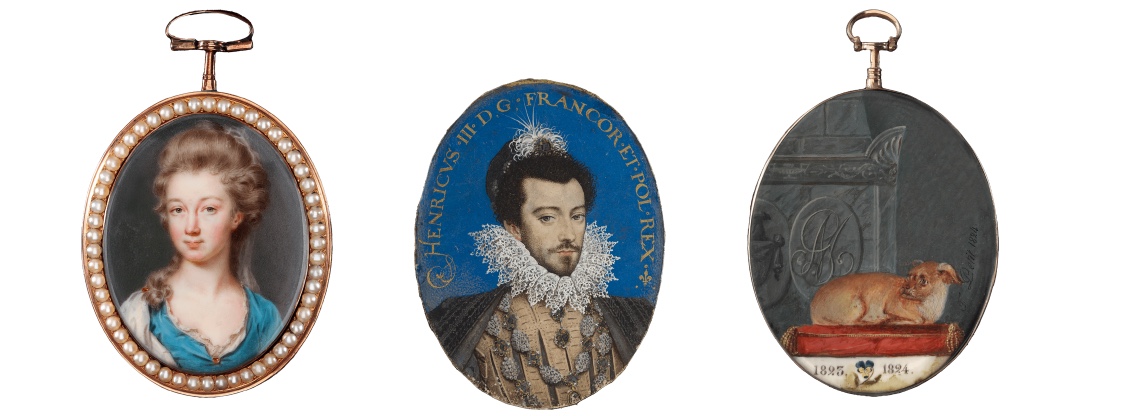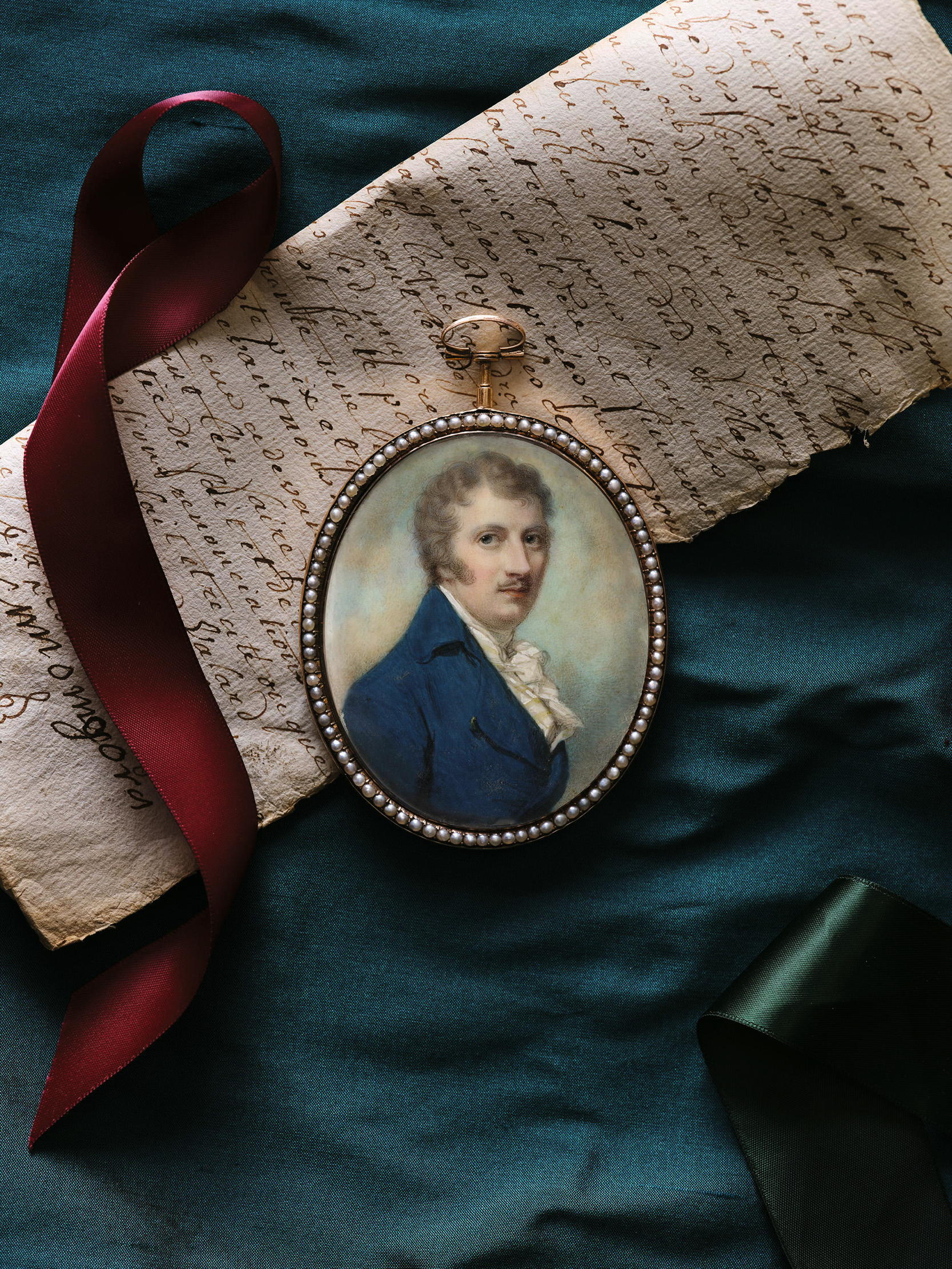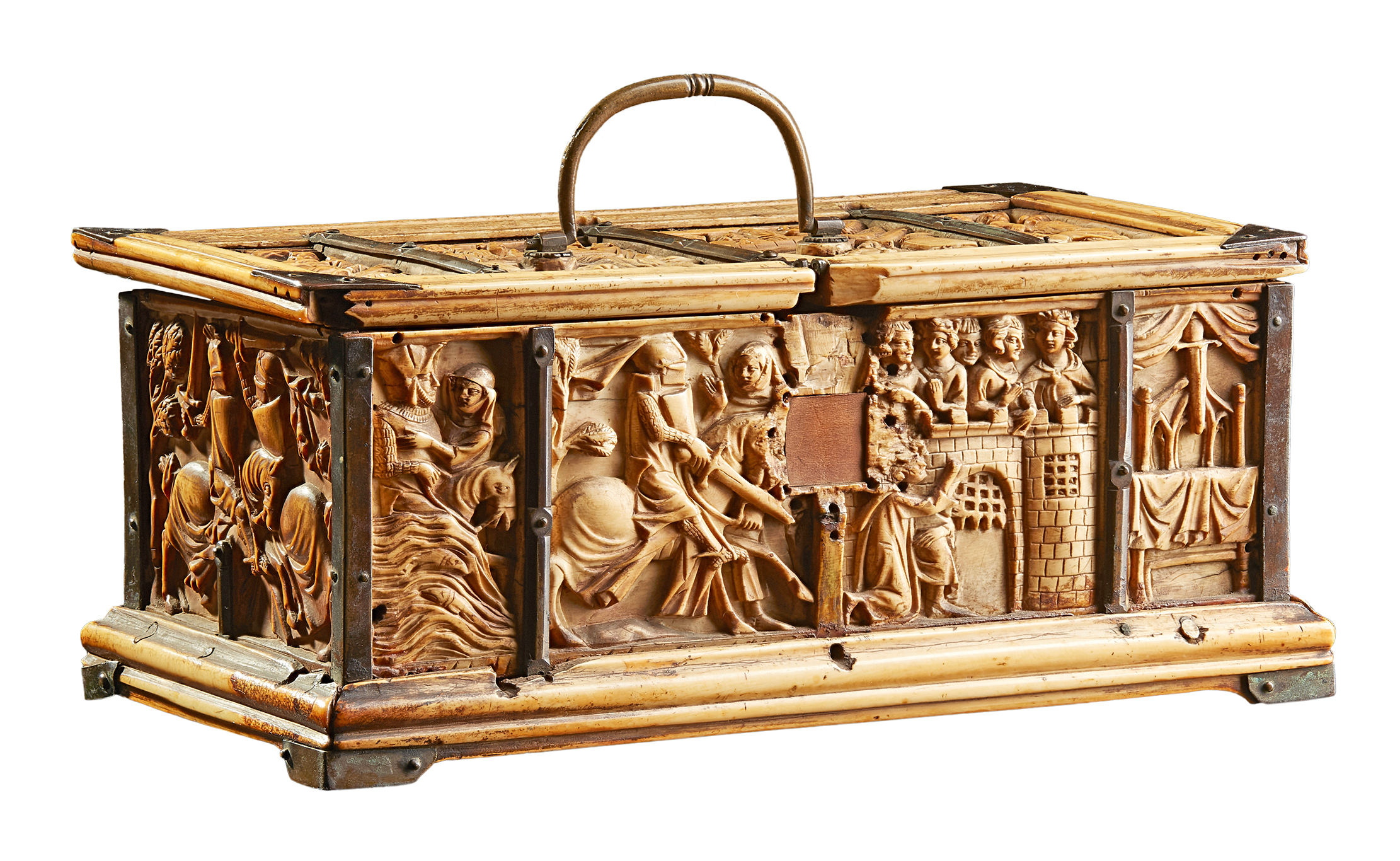Miniature heroes: The tiny portraits that delight, amuse, and have changed the course of English history
Over the centuries, miniatures sealed marriages, captured stolen glances and — in one unforgettable instance — tipped the balance power in Tudor England. Huon Mallalieu delves into the history of these often small and always perfectly formed portraits.


Miniature painting is ‘a thing apart from all other painting and drawing’ in showing ‘those lovely graces, witty smilings, and those stolen glances which suddenly like lightning pass’. So said Nicholas Hilliard (about 1547–1619), past master of the art.
Miniature, in this sense, does not necessarily mean small; rather, it describes a specific technique: detached portraits painted in water- or body colour on card or vellum by illuminators, or ‘limners’. The word derives from the Latin miniare, meaning to illuminate a document with minium or red lead. Post-Reformation limners no longer had a market for religious texts, but in Flanders and then France and England they found that portraits were in increasing demand. These were often very small indeed, but whatever size they may be, they are still known as miniatures.
The first portrait miniature is probably the self-portrait painted in about 1450 by Jean Fouquet, who worked for the French kings Charles VII and Louis XI. He was followed by Jean (1480–1541) and François Clouet (about 1510–72), whose royal portraits influenced the development of the art in England. Small portraits became important diplomatic tools in negotiating the dynastic marriages intended to be the glue of international alliances, with larger ‘miniatures’ propagating the power of monarchs.
The first to come to England were those of François I and his sons, made by Jean Clouet and sent to Henry VIII in 1526. These were known to Lucas Horenbout, a Fleming who worked for Henry from 1525 until his death in 1544, whose miniatures of Henry and his family influenced Holbein. The latter may also have met Clouet in France. (The necessary contradiction between flattering a sitter, but telling the truth to a suitor could end badly, as with Holbein’s portrait of Anne of Cleves, said to have cost Thomas Cromwell his head.)

Flemish and Anglo-French cross-fertilisation continued in the next generations. An unexpected treasure of the 2016 Maastricht TEFAF fair was an exquisite miniature by Hilliard, but the subject was not English — rather, it was Henri III of France, last of the Valois. Although he was rising in Elizabeth I’s service, from 1576, Hilliard spent three years in France, to ‘increase his knowledge’ and in hopes of money. He was taken up by Henri’s younger brother, the duc d’Anjou (Elizabeth’s ‘Frog’ suitor), and was known as ‘Nicholas Belliart, peintre anglois’. Perhaps this mangling of his name and a great deal of grime contributed to the miniature’s authorship being missed in a French provincial sale. At Maastricht, it was priced at €240,000, which seemed cheap, and sold quickly.
In France, Hilliard certainly met Jean Decourt (about 1530–85), a remarkable painter with an exquisite eye for detail. On the death of Francois Clouet, Decourt became official court artist to Charles IX and he is also documented as artist to Mary, Queen of Scots, as well as painting Elizabeth I and her favourite, Leicester, during visits to England in 1565–66. Until 2021, no certain example was known to have survived, but the dealer Philip Mould spotted an image of Henri III unrecognised and unattributed in a country sale; it was found to be signed and dated 1578 on the reverse. There is a strong relationship to the Hilliard and it has now been sold to the Louvre.
In 2019, the National Portrait Gallery put on a glorious exhibition devoted to Hilliard and his pupil and rival Isaac Oliver (about 1565–1617), at which magnifying glasses were provided. As Horace Walpole (who was distinctly cool about Hilliard) said of Isaac Oliver: ‘The largest magnifying glass only calls out new beauties.’ Many of the most famous images by both men were there, including Hilliard’s Young Man among Roses and Oliver’s Sir Edward Herbert, as well as Raleigh, Drake, Leicester and of course Elizabeth and the family of James I.
Exquisite houses, the beauty of Nature, and how to get the most from your life, straight to your inbox.

Three particularly English arts together almost define the Elizabethan and Jacobean period. Poetry, music and miniature painting shared refined, secular characteristics made possible by the Reformation and the substitution of courtly codes for religious rituals. Hilliard and Oliver’s portraits are elegant conceits, similar to those in metaphysical sonnets or the patterns of a galliard. The cult of the Virgin Queen meant that Elizabeth, in place of the Blessed Virgin, must be the sole focus of devotion, which explains the literary and pictorial intimations of homoerotic attraction among her courtiers; no female must rival her in their adoration. This was a sophisticated society, ruled by intricate conventions. It enjoyed a language of allusions and symbols, and miniatures, designed either to be flaunted or revealed in coy rituals, were important in this. Like a knight’s jousting shield, they might include impressa, an image and motto personal to the subject. When portraits were painted on the backs of playing cards, the choice of suit or number might be significant. Sometimes, these clues can still be understood, but often their full meanings are lost to us. We are not, after all, their intended audience.
Oliver was a Huguenot refugee and took some time to assimilate. However, in the Court of James I, he gradually replaced his old teacher, becoming official limner to the queen, Anne of Denmark, as Hilliard had been to Elizabeth. Their styles gradually diverged. When he first drew the Queen, Hilliard discussed methods with her and they agreed that portraits benefited from minimal shadow; it is extraordinary how well he modelled his heads without it. Oliver came to shadow faces more strongly, which makes some of his later portraits, such as John Donne or Venetia Stanley, so arresting.

The taste for miniatures spread out from royal courts and it received a significant boost in Britain during the mid-17th-century Civil Wars, with Samuel Cooper providing more sombre examples, and again in the Jacobite period, as such small images were badges of loyalties that could easily be concealed. A little byway of this was the development of costume overlays, by which sitters’ identities could be disguised at need. Some-times, these have been used for erotic scenes.
During the 18th century, miniatures came out of hiding, as it were, to be worn or displayed by lovers or spouses separated by empire-building or wars overseas. Often, these have hair in the back of the case. There were memorials and quirky fashions, too, such as portraits of a single eye. The connection to limning weakened and other media and supports became popular, including oil paint on copper, enamel, plumbago and pastel, but in the latter part of the century watercolour on ivory plaques came to predominate. This should not discourage modern collectors, as antique miniatures are exempt from British ivory legislation. Positive attractions to collectors are the stories and direct connections to sitters and artists that research can reveal. Miniatures are the most personal of all portraits, and, if there is a lock of hair in the case, an owner holds the sitter’s DNA in their hand.
The list of successful 18th- and 19th-century British and French male and female miniaturists would fill a page; among the most eminent working in England were John Smart (1741–1811), who travelled to India and whose luminous eyes are a trademark; Richard Cosway (1742–1821); Richard Crosse (1742–1810), deaf-mute but far from blind; Samuel Shelley (1750–1808); George Engle-heart (1750–1829); Sir William Charles Ross (1794–1860); and Robert Thorburn (1818–85). Although the fashion waned with photography, the Royal Society of Miniature Painters and the Hilliard Society flourish still.

Where to see miniature portraits and miniature paintings
The Victoria & Albert Museum is now showing more miniatures, including those from the Gilbert Collection, and the revamped National Portrait Gallery has a dedicated gallery.
The Royal Collection is also rich and Compton Verney in Warwickshire has two collections: 72 examples from the late Lady Grantchester and more than 800 on long-term loan from the Dumas-Egerton Trust.
Many antique dealers have miniatures, but there are few specialists. Emma Rutherford, a long-time consultant, has set up The Limner Company to research and sell them (www.portraitminiature.com). She will curate a major autumn show at Compton Verney.
Cynthia Cunningham has been dealing as Wigs on the Green for more than 20 years (www.wigsonthegreen.co.uk) and Philip Mould of Pall Mall, SW1 (www.philipmould.com), is particularly interested in the earlier artists.

Credit: Lyon & Turnbull
The tiny wooden chest handed down through the generations that turned out to be worth over £1 million
Huon Mallalieu reports on an extraordinary — and record-breaking — auction of a chest roughly the size of a small loaf of
After four years at Christie’s cataloguing watercolours, historian Huon Mallalieu became a freelance writer specialising in art and antiques, and for a time the property market. He has been a ‘regular casual’ with The Times since 1976, art market writer for Country Life since 1990, and writes on exhibitions in The Oldie. His Biographical Dictionary of British Watercolour Artists (1976) went through several editions. Other books include Understanding Watercolours (1985), the best-selling Antiques Roadshow A-Z of Antiques Hunting (1996), and 1066 and Rather More (2009), recounting his 12-day walk from York to Battle in the steps of King Harold’s army. His In the Ear of the Beholder will be published by Thomas Del Mar in 2025. Other interests include Shakespeare and cartoons.
